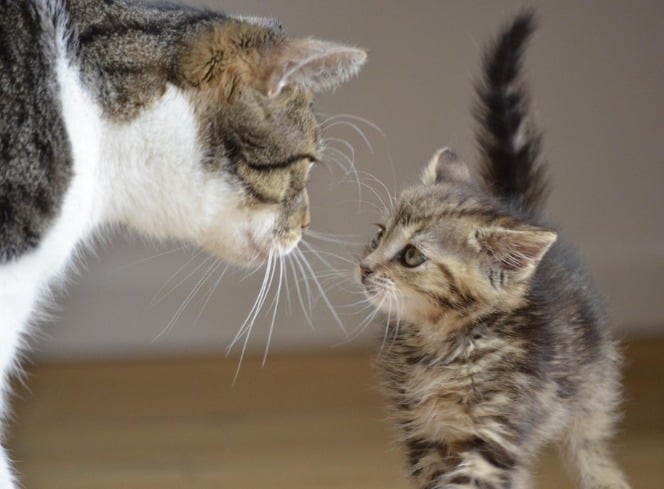Often, the thought of travelling with your cat is worse than the reality. If your feline is properly conditioned to riding in a car, they’ll learn to actually really love it - making your journey nicer and their journey a lot more enjoyable too. In this blog, we discuss how to condition your cat to the car and how to make any car journeys as comfortable as possible.
Preparing Cats For A Long Car Journey
The first, most important thing you need to start with is introducing your cat to their carrier. Your cat will need to be safely restrained for travel, so make sure you’ve spent time training your cat to love their carrier well before you need to travel - this will make travelling in their carrier a lot less stressful for them.
Once you’ve got them to love their carrier, it’s time for them to love the car too! Settle your cat in their carrier and take them out to the car. Stay sat stationary in the car with all doors closed and sit in the back with your cat, partially open their carrier to give praise or treats. You mustn’t try this if the weather is too hot or too cold as this could be dangerous for you and your feline. Once your cat is happy in the car, in their carrier, you could give them an interactive toy to play with to keep them engaged.
When your cat is happy playing in their carrier in your stationary car, turn on your engine and let them feel the vibration of the car, the radio, and any heating/cooling you may have on in the car whilst you’re driving. If they do get stressed by any of these sounds, make sure to keep soothing them to avoid putting them under any stress.
When your cat is happy and comfortable with the sound and feel of the car, take short car journeys to get your cat used to travelling. Don’t go too far to begin with, you can build this up. In the first instance, try to the bottom of your street/road and back. Continue to build this up by taking your cat every few days, and your cat will soon love travelling with you!
How To Make My Cat More Comfortable In The Car
It’s good to keep your cats carrier comfortable, they’ll feel more positive about the whole experience if they’re comfy and can curl up into something warm and soft, so pop a warm blanket inside and they can get comfy. It’s good to place their bed, blankets or a towel they’re used to inside the car. This way, their scent will already be inside the car, helping them feel more relaxed.
How To Secure A Pet Carrier In A Car
There are many safety products you can choose from, which can help with travelling safely in the car. It’s most important you choose a solution that’s suitable and comfortable for your cat, and it has been installed and executed correctly to ensure the safety of your pet. Here at Lords & Labradors, we’d recommend the following the guidelines below when picking your carrier.
- Make sure they’re sturdy - Plastic is considered the safest type of material for your cat to travel in over cardboard or mesh. Plastic carriers are also easier to keep clean.
- Choose the size based on the size of your cat - The carrier will need to be tall enough to allow your cat to sit, stand up, move about and long enough for your cat to be able to lie down comfortably.
- Front and roof opening doors - Some cats may be easier to place in their carrier by being carefully lowered through the roof door, whilst other cats may prefer being placed through the side door. Having both options is great as then you can be flexible to the method that suits your cat.
- Sides that offer privacy - A carrier that has a solid back and sides will give your cat privacy, but also has slits for ventilation - you could use these slits to offer treats to your cat.
- Space for a warm base - Pop a blanket in the bottom of their carrier and ensure the blanket smells of your cat and home so they feel comforted and reassured.
How To Soothe A Cat In A Car
Where possible, spray a cat calming spray in your car about 15 minutes before you’re likely to travel. Remember they have an excellent sense of smell, so any smelling car air fresheners may seem unpleasant to them, so it’s best to remove them from your car before travelling. Keep your car a good temperature (if your home is particularly warm, try to replicate that in your car) and you may even want to place a blanket over the top of the carrier to block out any distractions for your cat - make sure you still have air coming into and out of the carrier. Don’t forget to talk to them and soothe them throughout your journey and try to avoid any sharp driving manoeuvres where possible.


































































































